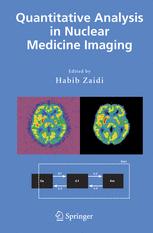

Most ebook files are in PDF format, so you can easily read them using various software such as Foxit Reader or directly on the Google Chrome browser.
Some ebook files are released by publishers in other formats such as .awz, .mobi, .epub, .fb2, etc. You may need to install specific software to read these formats on mobile/PC, such as Calibre.
Please read the tutorial at this link: https://ebookbell.com/faq
We offer FREE conversion to the popular formats you request; however, this may take some time. Therefore, right after payment, please email us, and we will try to provide the service as quickly as possible.
For some exceptional file formats or broken links (if any), please refrain from opening any disputes. Instead, email us first, and we will try to assist within a maximum of 6 hours.
EbookBell Team

5.0
78 reviewsThis book provides a review of image analysis techniques as they are applied in the field of diagnostic and therapeutic nuclear medicine. Driven in part by the remarkable sophistication of nuclear medicine instrumentation and - crease in computing power and its ready and inexpensive availability, this is a relatively new yet rapidly expanding field. Likewise, although the use of nuclear imaging for diagnosis and therapy has origins dating back almost to the pioneering work of Dr G. de Hevesy, quantitative imaging has only recently emerged as a promising approach for diagnosis and therapy of many diseases. An effort has, therefore, been made to place the reviews provided in this book in a broader context. The effort to do this is reflected by the inclusion of introductory chapters that address basic principles of nuclear medicine instrumentation and dual-modality imaging, followed by overview of issues that are closely related to quantitative nuclear imaging and its potential role in diagnostic and therapeutic applications. A brief overview of each chapter is provided below. Chapter 1 presents a general overview of nuclear medicine imaging physics and instrumentation including planar scintigraphy, single-photon emission computed tomography (SPECT) and positron emission tomography (PET). Nowadays, patients’ diagnosis and therapy is rarely done without the use of imaging technology. As such, imaging considerations are incorporated in almost every chapter of the book. The development of dual-modality - aging systems is an emerging research field, which is addressed in chapter 2.